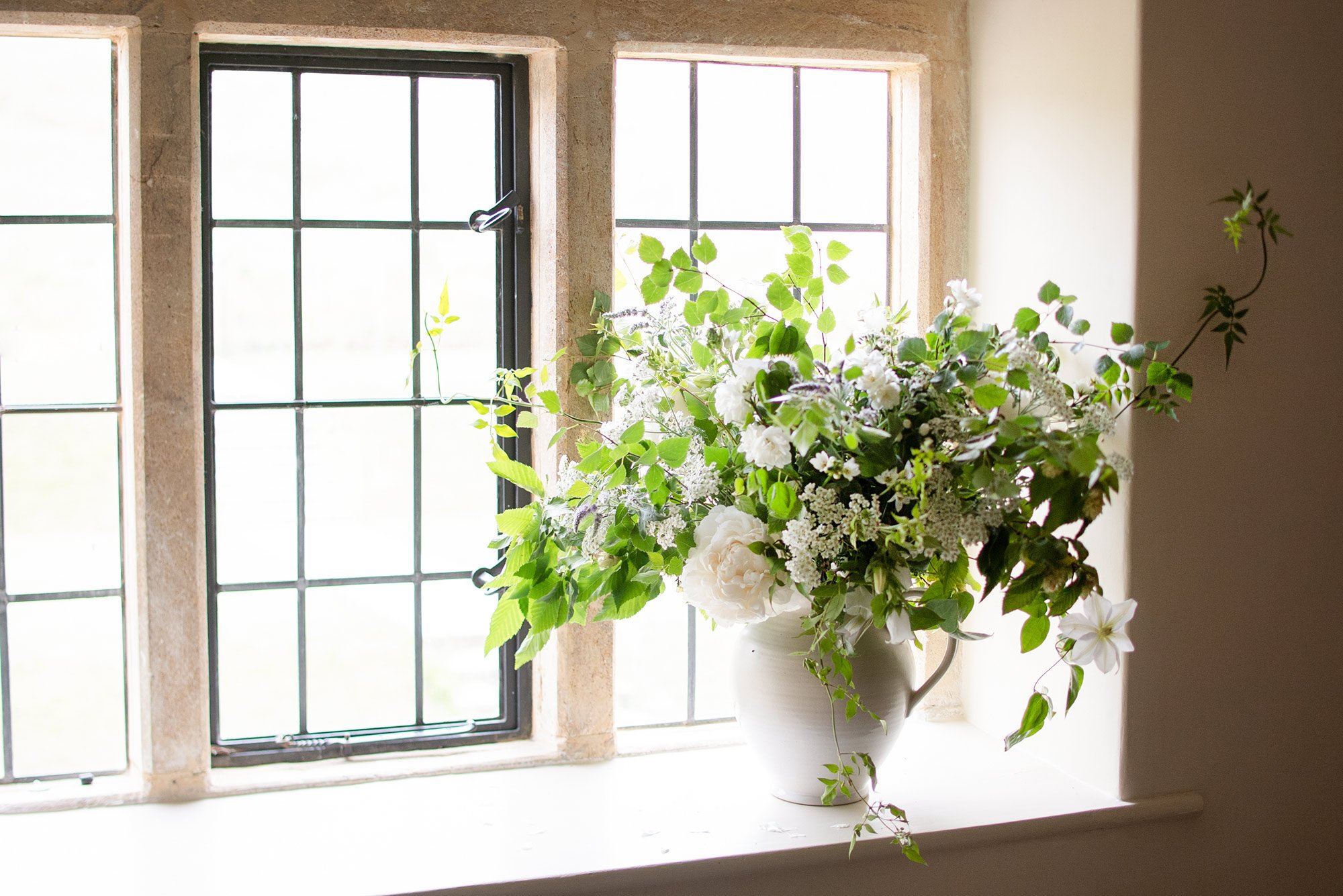WINTER TABLE DESIGN
COMPOTE BOWL & KENZAN (PIN HOLDER)
STEP BY STEP WINTER TABLE DESIGN
We often think there are minimal flowers available to us in the winter months, yet, these cold months have a bountiful supply of the most beautiful, delicate florals.
In the studio, I created a series of table designs for a weekend celebration, using a selection of my favourite late-winter flowers. Below I share how you can make a similar design yourself, and bring a sense of optimism and fragrance into your space.
Using a delicate compote bowl (a small bowl raised slightly from the table), I brought together a selection of hellebores, narcissus and ranunculus, alongside a few foraged stems. The latter helped me to create the initial base framework and I included a few more at the end for increased texture. And for the mechanics, I used a weighted Kenzan pin holder.
I hope the images and written descriptions help inspire you to create an elegant, flower rich, winter table design.
VESSEL & MECHANICS
I sourced a beautiful one-off compote bowl (15cm diameter) from Vervain - florist and flower grower, owned by India Hurst, based in Worcestershire, England. This is a particularly beautiful bowl, you can though easily source many similar vases both directly from ceramicists and stockists.
For the mechanics, you can add a pillow of chickenwire or a Kenzan pin holder (a reusable mechanic which supports and holds your stems in place), the latter I decided to use.
This particular pin holder has a superb weight to it, so I didn’t need to fix it to the base of the vase - if though your Kenzan is a little lighter, you can easily secure it firmly to the bottom of your vase using Oasis Fix - a waterproof tac that will stop the holder from tipping as you add stems.
You can find Kenzans easily online (both new and reused) - one stockist in the UK is Wood & Meadow.
INGREDIENTS
I used a selection of late winter flowers, including hellebores, narcissus and ranunculus (forming the focal and filler stems) and a few foraged stems (for the initial shape framework and at the end for added textures), these included:
Hellebores ‘Maestro’
Hellebores ‘Winterbells’
Ranunculus ‘Manuela’
Ranunculus ‘Hanoi’
Ranunculus ‘White Elegance’
Narcissus ‘Paperwhite’
Narcissus ‘Spray Avalanche’
Hazel Catkins
Dried grasses (mix)
Dried ferns
Dried leaves
BASE SHAPE
Place your Kenzan inside your compote bowl, and add water.
Select two initial stems to form the base shape - placing along one line, with differing heights. Small branches (as I used), blossom and greenery are often great options for these first stems, it can also be a flower with a strong stem and shape. The first two stems give you a shape to your base framework, this helps you to position the next stems, to create a design with movement and interest.
FRAMEWORK
The first two stems give you a shape to your base framework, this helps you to position the next stems, to create a design with movement and interest.
KENZAN
The Kenzan pin holder will fully support your stems, firmly and gently holding them upright, in whichever position you choose.
As you add the stems to the vase, hold them almost like pencil, with your hand towards the end of the stem - this gives you greater control and helps to stop the stem from breaking.
FOCAL & FILLER
Your main flowers are your focal flowers, in this design, these includes hellebores, followed by the ranunculus. Add these stems first to continue creating the shape of your design.
Next step is to add your filler stems. The narcissus here are used as a filler flowers, adding texture and depth to the design.
COLOURS
I love winter designs with a subtle warmth to them.
The blush-fawn tone of both the ranunculus and hellebores works beautifully adding warmth to the predominantly white and green palette within the design.
The delicate detail of the grass, ferns and branches gently enhance the warm browns within the design.
PLACEMENT
I prefer designs where the lip of the vase is interrupted, with flower heads placed so they naturally fall over the edge. By interrupting the line of the vase, the vase and the flowers become one larger design, rather than two individual components.
Select naturally “drooping” flower heads - in this design, both the narcissus and hellebores are great options.
TEXTURE & DETAIL
The combination of the different stems, brings such a beautiful, depth to the design.
I love the full petals of the hellebores, set against the lace like fonds of the bracken and the miniature catkin columns.
CARE OF DESIGN
The design will last indoors for several days.
Simply keep the water level topped up - you will find with the large number of flowers and relatively small bowl, the design will need to be topped up once per day.
we have much more to share with you!
FLORISTRY FUNDAMENTALS MASTERCLASS
SUMMER LAUNCH
If you would like to learn how to create more designs, using solely sustainable techniques, in much greater depth and details, you might be interested to read about our Floristry Fundamentals Masterclass. The Masterclass has been created for beginners, home arrangers and florists looking for a refresh. Within the Masterclass, we teach you how to create beautiful, unique designs which will give you all the key skills you need to take your floristry forward. We include theory and behind-the-scenes modules, a private community group and Live Q&As.
CREATE YOUR OWN WEDDING FLOWERS
AVAILABLE NOW
We also host an incredible online Masterclass if you are planning to create wedding flowers, either for yourself, family or friends. At a gentle pace, this Masterclass gives you everything you need, from imagining the breathtaking wedding flowers to being surrounded by them on the big day.
Creating with a small team, friends and family, and with Philippa as your personal guide.
















